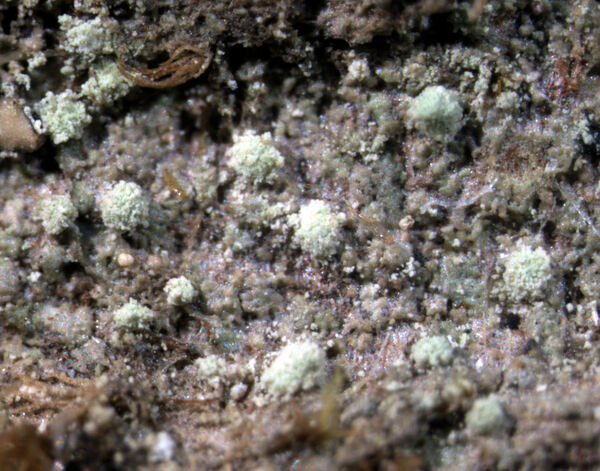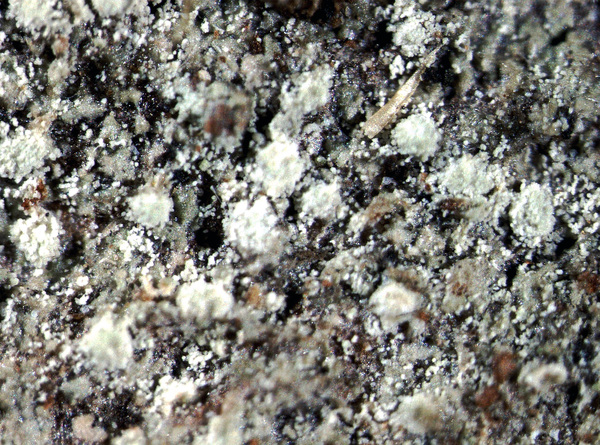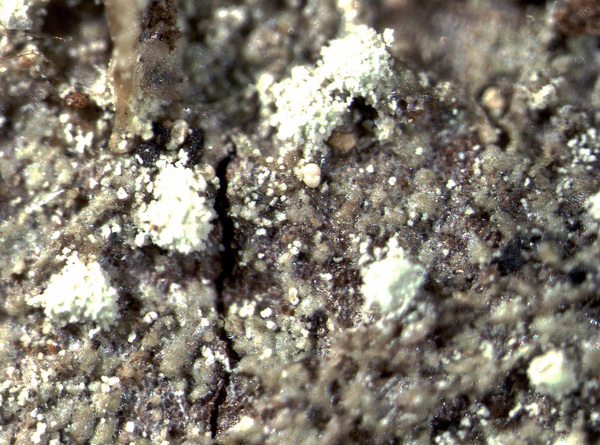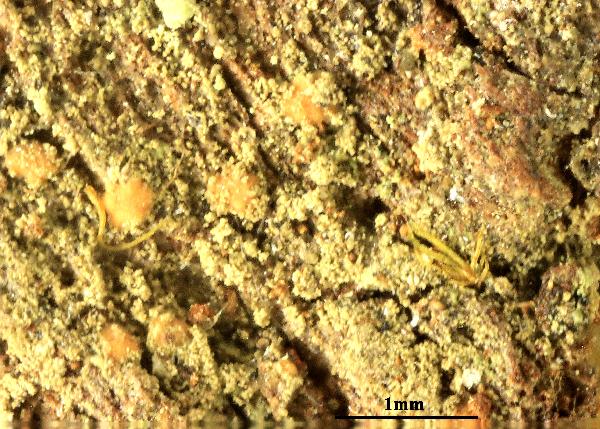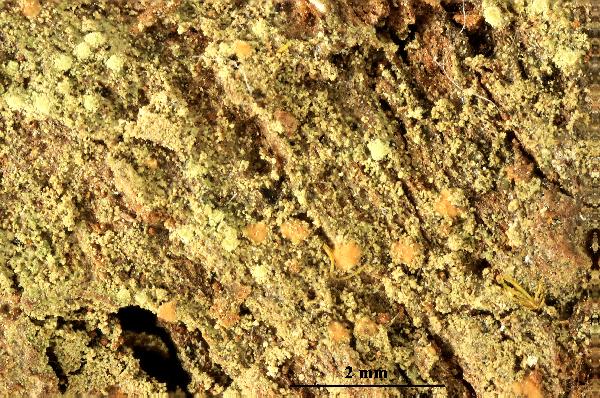Trapelia corticola Coppins & P. James
Lichenologist, 16: 254, 1984.
Synonyms: Lecidea elegantula Riehm. nom. illegit.; Trapejamesia corticola (Coppins & P. James) S.Y. Kondr.
Distribution: N - Lomb (Stofer 2006), Lig (Ravera & al. 2022). C - Tosc. S - Si (Nimis & al. 1994).
Description: Thallus crustose, endosubstratic or thinly episubstratic, sorediate, poorly delimited, pale brown in exposed sites, brownish green in shade, the young areoles arising on the hypothallus, with thin margins, early becoming uneven and coalescing into a thin, verrucose-uneven crust with 30-80 µm wide, very poorly delimited subunits, sometimes delimited by a very thin, pale prothallus. Soralia punctiform, 0.1-0.3(-0.5) mm across, usually discrete but sometimes confluent, strongly convex, pale brown to pale greenish brown, with farinose, c. 20 µm wide soredia. Apothecia very rare, lecideine, sessile, 0.2-0.35(-0.4) mm across, with a concave to flat, pale pinkish brown to medium brown disc and a very thin, paler proper margin, without a pseudothalline rim. Proper exciple 20-30 μm thick, of colourless hyphae embedded in a colourless to weakly pigmented gel; epithecium almost colourless to pale yellowish brown; hymenium colourless, 80-110 μm high; paraphyses coherent, thin, densely branched and anastomosing, the apical cells,brown, swollen, to 3.5 μm wide; hypothecium colourless. Asci 8-spored, cylindrical-clavate, unitunicate, thin-walled, the apical dome K/I-, or weakly K/I+ blue, Trapelia-type. Ascospores 1-celled, hyaline, ellipsoid, 9-15.5 x 5-9 μm. Photobiont chlorococcoid. Spot tests: soralia K-, C+ red, KC+ red, P-, UV+ white. Chemistry: gyrophoric acid (major), perhaps traces of 5-O-methylhiascic acid.
Note: on the spongy, loose bark of deciduous trees, sometimes on moribund epiphytic bryophytes in sheltered, humid woodlands at low elevations. It is included in the Italian red list of epiphytic lichens as “Endangered” (Nascimbene & al. 2013c).
Growth form: Crustose
Substrata: bark
Photobiont: green algae other than Trentepohlia
Reproductive strategy: mainly asexual, by soredia, or soredia-like structures (e.g. blastidia)
Commonnes-rarity: (info)
Alpine belt: absent
Subalpine belt: absent
Oromediterranean belt: absent
Montane belt: absent
Submediterranean belt: extremely rare
Padanian area: absent
Humid submediterranean belt: very rare
Humid mediterranean belt: very rare
Dry mediterranean belt: absent
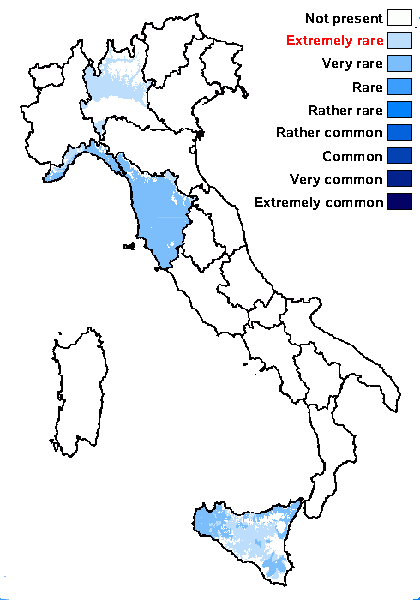
Predictive model
Herbarium samples


P.L. Nimis; Owner: Department of Life Sciences, University of Trieste
Herbarium: TSB (30292)
2001/12/01
Growth form: Crustose
Substrata: bark
Photobiont: green algae other than Trentepohlia
Reproductive strategy: mainly asexual, by soredia, or soredia-like structures (e.g. blastidia)
Commonnes-rarity: (info)
Alpine belt: absent
Subalpine belt: absent
Oromediterranean belt: absent
Montane belt: absent
Submediterranean belt: extremely rare
Padanian area: absent
Humid submediterranean belt: very rare
Humid mediterranean belt: very rare
Dry mediterranean belt: absent

Predictive model
| Herbarium samples |


 INDEX FUNGORUM
INDEX FUNGORUM
 GBIF
GBIF
